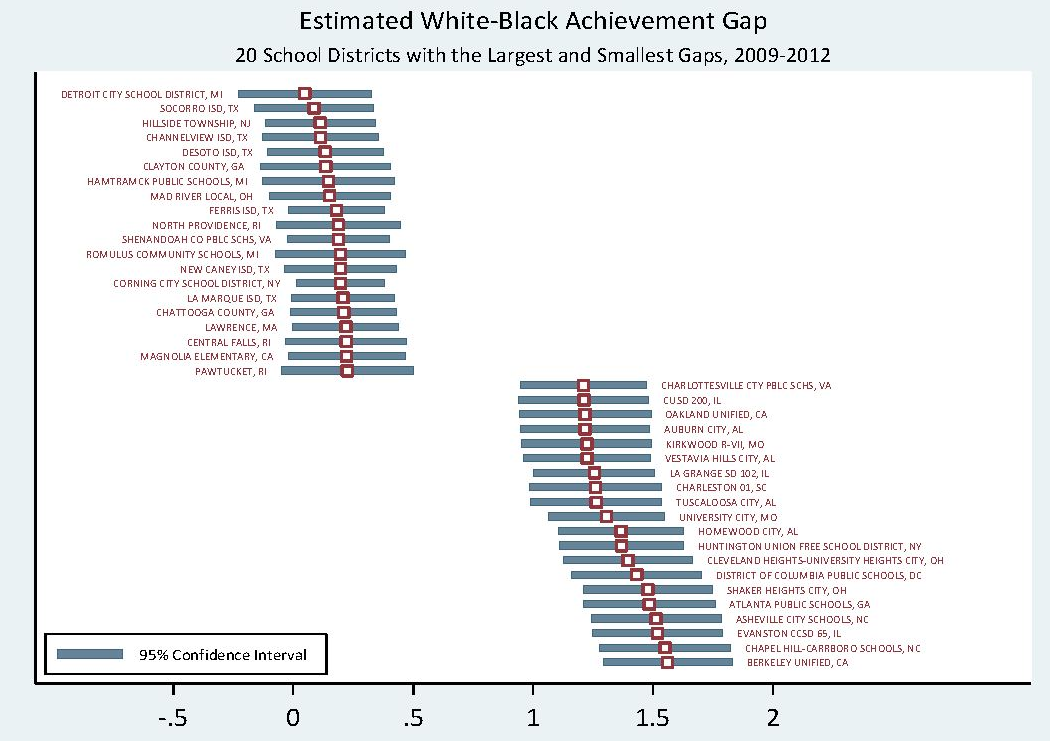The Center for Education Policy Analysis recently unveiled the impressive Stanford Education Data Archive. According to Education Week, researchers from Stanford and Harvard used the data to analyze the “average achievement gap trends for 3rd-8th grade students in more than 11,000 districts across the country from 2009 to 2013.” It is the first in a series of studies to be published using the Stanford Education Data Archive. What did they find?
Sean Reardon, a professor of poverty and inequality in education at Stanford University concluded,
Richer places have bigger achievement gaps than poorer places, all else being equal–which is quite striking and disturbing, since you’d hope that those places that have the most resources would be most effective at reducing the gaps, but in fact they seem to have the largest gap.
But it’s not just wealthy districts that had large achievement gaps. Many are wealthy districts in college towns.
In fact, Chapel Hill-Carrboro City Schools had two of the nation’s largest achievement gaps. White students in Chapel Hill outperformed their black and Hispanic classmates by around 1.5 full standard deviations or the equivalent of “four to five grade levels on the NAEP scale.” Asheville City Schools also made the list of the 20 districts with the largest white-black achievement gap.
It is interesting that those who preach equality have little of it.



